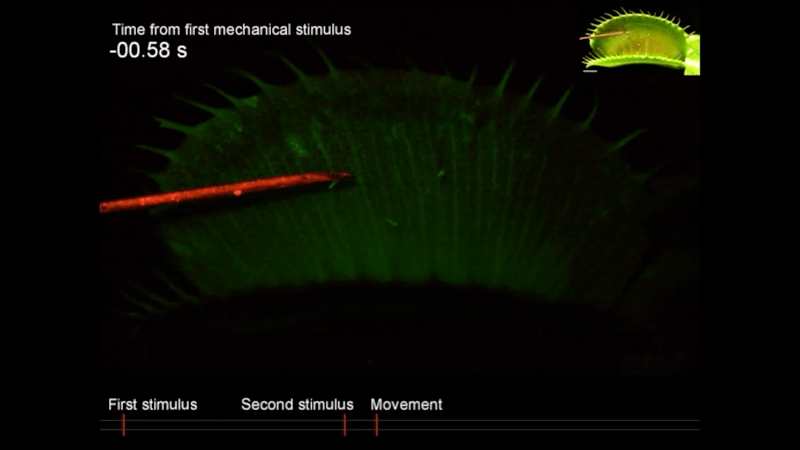How a Venus flytrap knows to snap shut (earthsky.org) [View all]
Posted by
Shireen Gonzaga
May 30, 2021
Few plants capture our imagination like the otherworldly Venus flytrap. Its snap-trap leaves clamp down on small insects in as fast as 1/10 of a second. That’s unexpected behavior among the staid plants we’re familiar with! Even now, scientists continue to learn new things about these enigmatic plants, like, for instance, how they know when to snap shut.
How does a Venus flytrap close up?
A Venus flytrap leaf has two lobes connected at a hinge on its stalk. Each lobe secretes nectar to attract insects. And each lobe is lined with cilia hairs that will later seem like prison bars to some unfortunate prey.
The lobes themselves are curved out and stretched open, like a clam. Each inner lobe has three sensory hairs. When something bumps against those hairs – whether it’s a raindrop, debris in the wind, or a visiting insect – that mechanical stimulus is converted into electrical signals in cells at the base of the hair. Those electrical signals then spread across the leaf.
An insect crawling on a lobe will most likely bump against the sensory hairs several times. But all it takes are two bumps within 30 seconds of each other for the lobes to clamp shut, imprisoning the prey.
So, how does the Venus flytrap keep track of the time interval between these bumps? Scientists had long suspected that calcium ions were somehow involved.

This video clip shows green fluorescence lighting up the Venus flytrap leaf when a sensor hair on its lobe is stimulated by a needle. Video via National Institute for Basic Biology.
***
more:
https://earthsky.org/Earth/Venus-Flytrap/?utm_source=EarthSky+News
